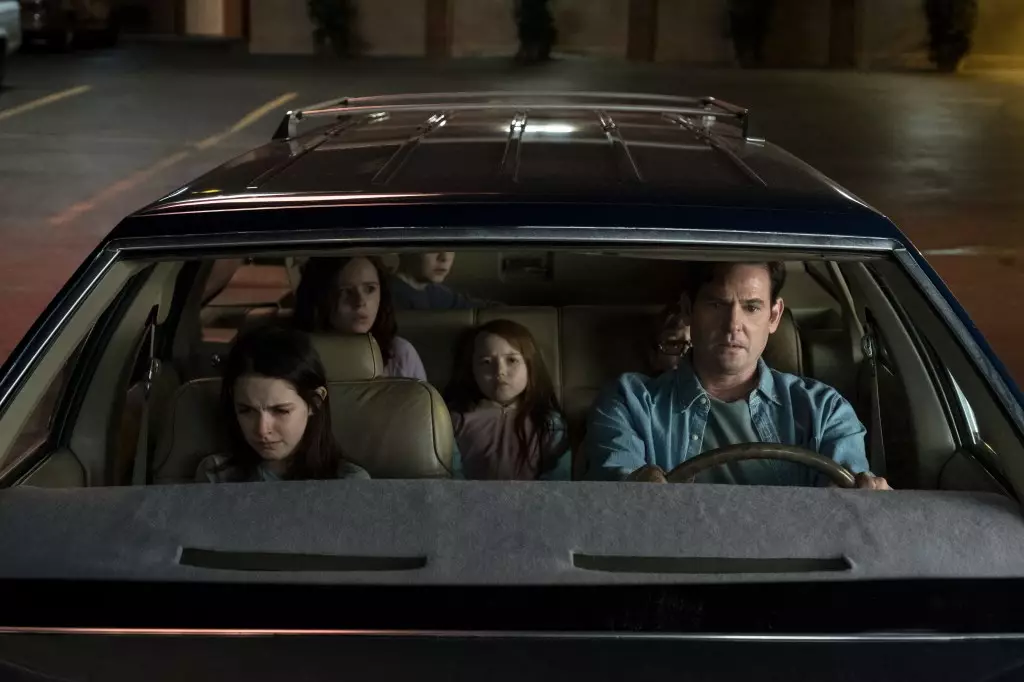In a world that often overlooks the raw essence of human emotion, horror director Mike Flanagan stands as a beacon, confronting the shadows of grief and loss with an unflinching gaze. His recent reflections at SXSW London reveal a deep connection between personal trauma and creative output, making us reassess not only the horror genre but the very idea of art as therapy. Flanagan’s approach exemplifies the necessity of allowing creative expression to be a cathartic escape, particularly when life brings us to our knees. The profound sorrow he experienced following a family suicide finds resonance in his works, especially in Netflix’s critically acclaimed series, The Haunting of Hill House.
Artistry as Catharsis
“The Haunting of Hill House” serves as a haunting canvas where Flanagan paints his grief. He candidly admits that the series acted as a cathartic release, a way to process a tragedy that is far too pervasive in our society. The character of Nell Crain’s tragic fate is more than a plot device; it mirrors Flanagan’s personal experience, illustrating a painful reality for many families wrestling with the aftermath of suicide. This powerful intersection between personal pain and storytelling echoes throughout the creative arts, challenging the often simplistic notion that horror is merely about fear. Instead, Flanagan suggests that it’s a poignant examination of human fragility.
As the narrative of loss unfolds, Flanagan’s method offers a unique perspective on how grief can be a catalyst for creativity. Art, in its highest form, should evoke truth, even when that truth is uncomfortable. Through horror, Flanagan dissects complex emotions—fear, sorrow, and ultimately, hope. It opens avenues for discussions around mental health that are often stigmatized, breaking the silence that surrounds such tragedies. What is more profound than that?
The Bias Against Horror
However, outside the realm of personal expression lies a pervasive stigma: the “bias against horror.” Flanagan eloquently highlights the industry’s recurrent pattern of dismissing horror as a legitimate narrative form. This isn’t merely a critique of chain reactions or trends; it’s an indictment of an audience that remains more comfortable with the familiar stereotypes of the genre. With each acclaimed work, like Jordan Peele’s masterpieces, we momentarily glimpse the genre’s depth before slipping back into preconceived notions. Flanagan argues that horror narratives are complex and remain tragically undervalued. There lies an urgent need for wider recognition that horror is not confined to the realm of jumpscares and cheap thrills. It is so much more; it is an exploration of human existence.
It is pivotal that audiences and industry professionals recognize horror’s potential to comment on societal issues, witness the complexities of relationships, and even reflect on our very nature. The horror genre demands a creative authenticity that is underrated and often overlooked, but continues to challenge normative storytelling.
Reimagining Storytelling
Flanagan also addresses the future of storytelling at a time when entertainment giants seek to streamline narratives, often compromising the emotional depth that complex monologues can offer. He passionately defends the art of the monologue as not merely a relic of theatrical tradition, but a powerful tool that can encapsulate the spectrum of human emotion in a single moment.
In an age where studios are hesitant to invest in deeply introspective scenes for rushed plots, Flanagan serves as a guardian of narrative richness. The emotional weight carried by poignant dialogue can redefine character arcs, providing audiences with moments that resonate beyond the screen. His view underscores that stories must maintain their integrity against commercial pressures, advocating for a more thoughtful approach to narrative construction in an era dominated by expedience.
Through Flanagan’s lens, we see that the core of horror stories is not about the supernatural or grotesque; it is ultimately about our shared humanity and the narratives that connect us. His choice to weave personal experiences into his work showcases how storytelling can foster meaningful discourse around grief and mental health, urging us to engage more openly in conversations about these often-ignored themes.
By embracing and normalizing such discussions through his films, Flanagan transforms what could be a mere genre into a living testament to humanity’s darkest corners and the light that can emerge from them.

Leave a Reply